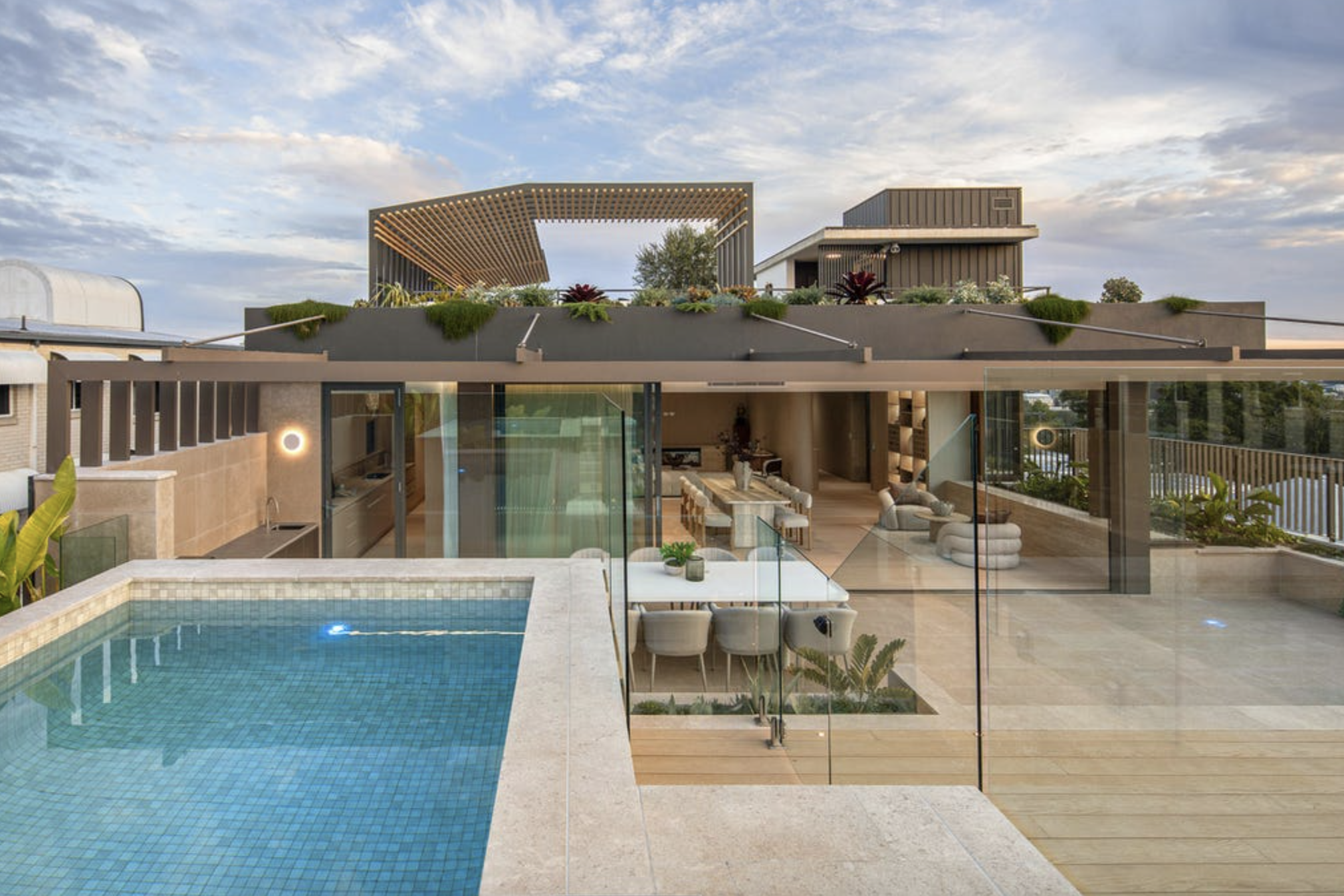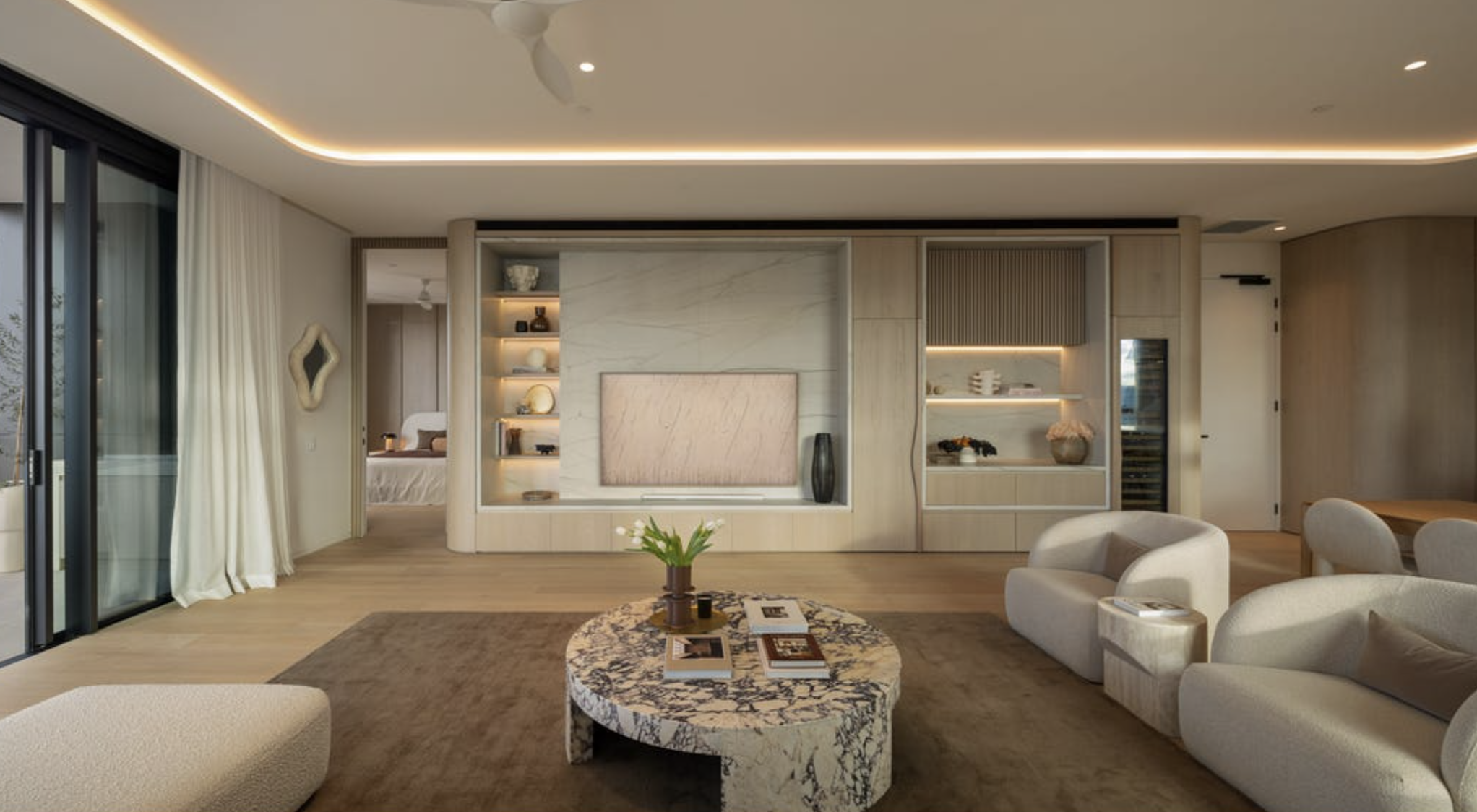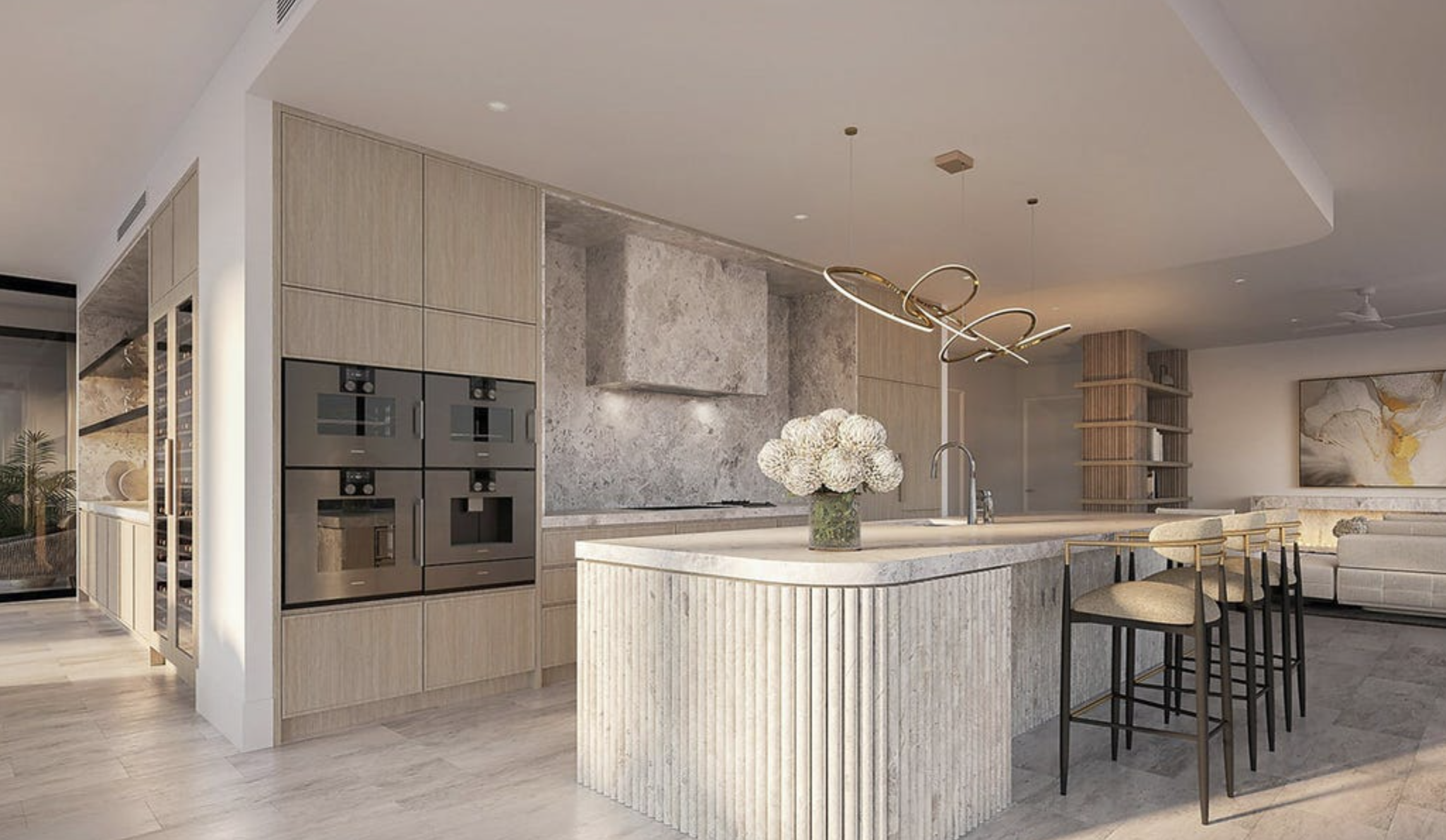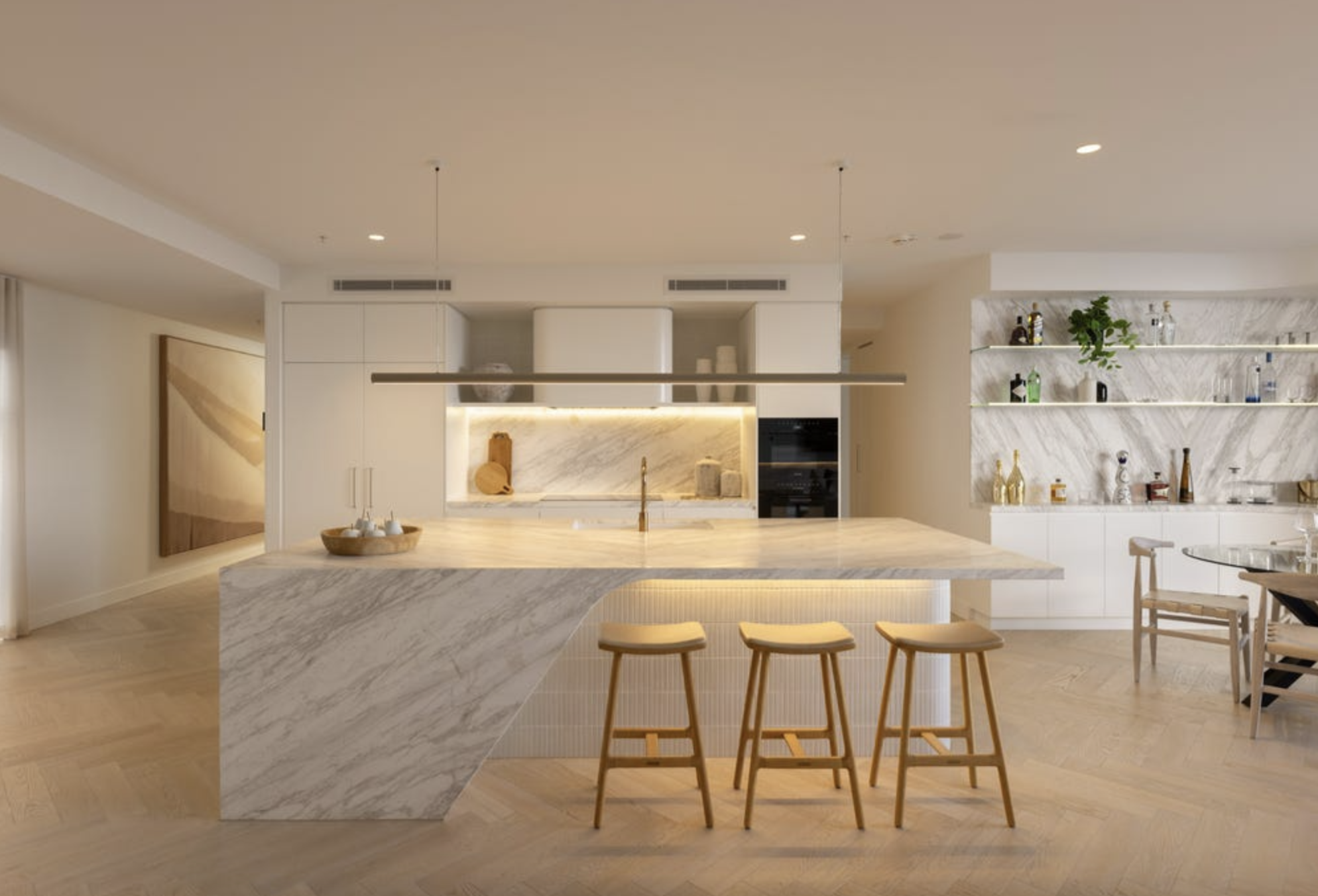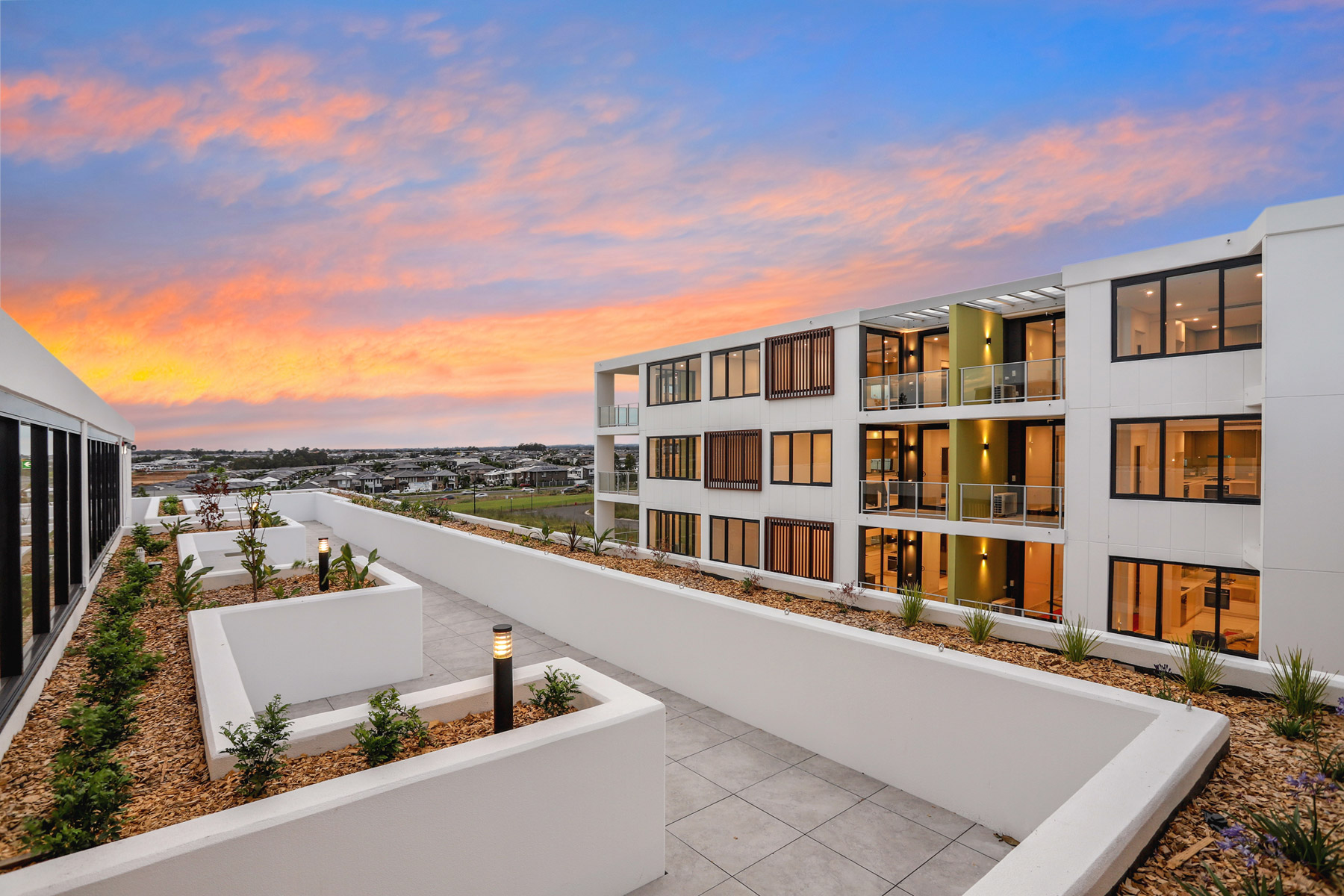Brisbane’s Five Standout Penthouses for 2025
From sky-high sanctuaries in Newstead to rare finds in Highgate Hill, these five standout Brisbane penthouses are redefining luxury living.
The Brisbane apartment market has really come of age in the last few years.
Downsizers in particular have identified the apartment market as undervalued, due to the limited amount of new supply coming to the market in the Queensland capital.
This is primarily due to build cost escalation and the limited availability of builders, which is constrained by government infrastructure projects associated with the Brisbane 2032 Summer Olympics.
Those downsizers are descending on the most premium apartments at the top end of the tower. These penthouses are more akin to those found in Sydney and Melbourne, rather than their Gold Coast neighbour, prioritising view lines of the skyline rather than private rooftops.
From apartment-laden precincts like Newstead to a rare offering in Highgate Hill, we’ve wrapped up the top five penthouses on the market in 2025.
Upper House, South Brisbane. Developer: Aria Property Group
Award-winning developer Aria Property Group is offering one of the penthouses atop its multi-award-winning Upper House in South Brisbane. The four-bedroom penthouse, completed in 2024, crowns one of the first buildings in Brisbane designed by legendary Japanese architect Koichi Takada.
The 253 sqm apartment features 3.1m coffered ceilings, hand-blown lighting, and a sculptural stone wine bar. The chef’s kitchen includes integrated Gaggenau appliances, a Pitt cooktop, Sub-Zero fridge, butler’s pantry, and wine fridge.
The layout features four bedrooms (one configured as a media room) and a lavish master suite with custom timber panelling, a skylit wellness-style en-suite, and a gallery-style robe with a makeup station. The three parking spaces include an EV charger.
Upper House is one of Brisbane’s most iconic buildings, recognisable for its signature gold pergola known as The Nest, the largest structure of its kind in the world, comprising more than 681 individual cross-laminated timber pieces atop the 33rd level.
The building’s 32nd and 33rd levels house resident amenities, including an infinity-edge pool, spa, magnesium plunge, sauna, steam room, yoga studio, wine bar, private dining room, cinema, and a boardroom.
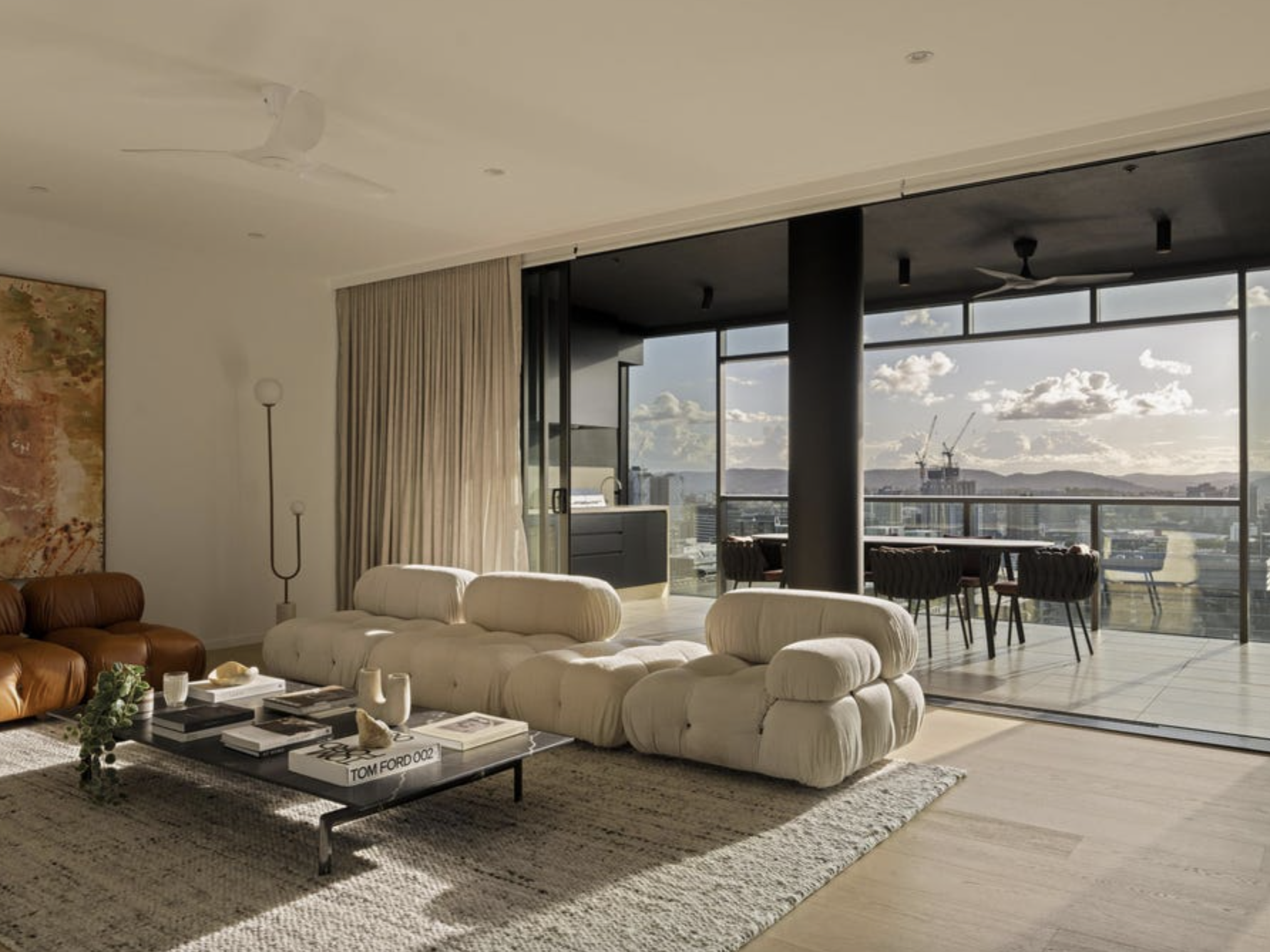
Luminare, Newstead. Developer: Cavale
The corner penthouse atop the Luminare building in Newstead is poised to become the 10th sale in the development to surpass the $5 million mark.
Sky Home 2302 offers uninterrupted views from Mt Coot-tha to the city skyline, thanks to its expansive 40m north-facing frontage. The penthouse spans 262 sqm of internal and external space and includes four bedrooms, two living rooms, and a study nook.
At its heart is a 5m Taj Mahal quartzite island, framed by a full suite of Miele appliances, Zip Tap, and concealed prep kitchen. A 330-bottle wine cellar, integrated bar, and outdoor kitchen with Hoshizaki ice machine complete the entertainer’s layout.
The master suite occupies its own wing and features floor-to-ceiling windows, a full-height walk-in robe, an ensuite with freestanding bath, and a unique “midnight kitchen” with minibar for skincare and wellness essentials.
Completed in 2023 and crowned Best Residential High-Rise in Australia at the Master Builders Queensland Awards, Luminare also leads Brisbane’s wellness evolution.
Residents enjoy access to cryotherapy, reformer Pilates, nutrition and sleep programs, rooftop horticulture workshops, and dog grooming. Atop the building sits Australia’s highest cantilevered glass-edge pool, magnesium spas, saunas, and a $300,000 Technogym facility.
High-profile residents include Domino’s Pizza boss Don Meij, who is believed to have set a city price-per-sqm record with his $12.95 million purchase, and Vita Group founder Maxine Horne.
Rivello, Hamilton. Developer: Brookfield Residential Properties
The penthouse atop one of Hamilton’s newest developments is among the largest delivered in Brisbane in recent years. Perched atop Rivello on Wharf Street, this five-bedroom residence offers 438 sqm of internal space and a further 124 sqm across three balconies.
At its core is a gourmet kitchen with a stone benchtop, Gaggenau appliances, and a generous butler’s pantry.
The adjoining dining area, main living space with statement fireplace, and secondary living room with wet bar and Liebherr fridge provide ample entertaining options. A full-width main balcony maximises riverfront exposure.
Additional features include a dedicated cinema with seven seats, home gym, full home office, and five ensuited bedrooms — all expertly finished to a luxury standard.
Noura, Highgate Hill. Developer: Walter Iezzi Property Group
Arguably the most impressive apartment developed in Highgate Hill, the Noura Penthouse is now complete and on the market, with expectations that it will set a new suburb record.
Occupying the entire top floor of a boutique six-residence building on Beaconsfield Street, this sky home offers the largest external area on this list, with nearly 200 sqm of outdoor living.
The rooftop features a private swimming pool, a full outdoor kitchen, a fireplace, alfresco dining, and a louvred roof for all-weather use.
Inside, the apartment features a Roman Classico travertine kitchen with Gaggenau appliances, a custom stone rangehood, Liebherr fridge, and an expansive butler’s pantry. There are three oversized bedrooms, each with a travertine-clad ensuite, plus a media room that can double as a fourth bedroom and a steam room.
The Noura development also offers a communal rooftop pool, dining space, and BBQ facilities for residents.
The Ambrose, Milton. Developer: Kokoda Property Group
The final penthouse in Kokoda’s Ambrose development in Milton stands out for a unique layout rarely seen in the modern penthouse market.
The 325 sqm residence atop the Cottee Parker-designed tower on McDougall Street includes four bedrooms, one of which is a fully self-contained apartment with its own living area and kitchen, ideal for multi-generational living or an au pair.
High-end inclusions run throughout: herringbone European oak floors, Volakas Classic marble, a custom bar, and a chef’s kitchen with Miele and Liebherr appliances, oversized island, and butler’s pantry.
The living area opens to a spacious balcony with sweeping city and river views and an integrated Artusi BBQ — also accessible from the master suite, which includes a walk-in robe, dressing area, and luxurious ensuite.
The Ambrose was an early adopter of Brisbane’s rooftop amenity trend. Completed in 2022, the rooftop features an infinity-edge pool, spa, barbecues, outdoor cinema, yoga lawn, residents’ lounge, private dining room, and a seven-day concierge.
Records keep falling in 2025 as harbourfront, beachfront and blue-chip estates crowd the top of the market.
A divide has opened in the tech job market between those with artificial-intelligence skills and everyone else.
The 2026 McGrath Report warns that without urgent reforms to planning, infrastructure and construction, housing affordability will continue to slip beyond reach for most Australians.
Australia’s housing market has reached a critical juncture, with home ownership and rental affordability deteriorating to their worst levels in decades, according to the McGrath Report 2026.
The annual analysis from real estate entrepreneur John McGrath paints a sobering picture of a nation where even the “lucky country” has run out of luck — or at least, out of homes.
New borrowers are now spending half their household income servicing loans, while renters are devoting one-third of their earnings to rent.
The time needed to save a 20 per cent deposit has stretched beyond ten years, and the home price-to-income ratio has climbed to eight times. “These aren’t just statistics,” McGrath writes. “They represent real people and real pain.”
McGrath argues that the root cause of Australia’s housing crisis is not a shortage of land, but a shortage of accessibility and deliverable stock.
“Over half our population has squeezed into just three cities, creating price pressure and rising density in Sydney, Melbourne and Brisbane while vast developable land sits disconnected from essential infrastructure,” he says.
The report identifies three faltering pillars — supply, affordability and construction viability — as the drivers of instability in the current market.
Developers across the country, McGrath notes, are “unable to make the numbers work” due to labour shortages and soaring construction costs.
In many trades, shortages have doubled or tripled, and build costs have surged by more than 30 per cent, stalling thousands of projects.
Need for systemic reform
McGrath’s prescription is clear: the only real solution lies in increasing supply through systemic reform. “We need to streamline development processes, reduce approval timeframes and provide better infrastructure to free up the options and provide more choice for everyone on where they live,” he says.
The 2026 edition of the report also points to promising trends in policy and innovation. Across several states, governments are prioritising higher-density development near transport hubs and repurposing government-owned land with existing infrastructure.
Build-to-rent models are expanding, and planning reforms are gaining traction. McGrath notes that while these steps are encouraging, they must be accelerated and supported by new construction methods if Australia is to meet demand.
One of the report’s key opportunities lies in prefabrication and modular design. “Prefabricated homes can be completed in 10–12 weeks compared to 18 months for a traditional house, saving time and money for everyone involved,” McGrath says.
The report suggests that modular and 3D-printed housing could play a significant role in addressing shortages while setting a new global benchmark for speed, cost and quality in residential construction.
Intelligent homes
In a section titled Weathering the Future: The Power of Smart Design, the report emphasises that sustainable and intelligent home design is no longer aspirational but essential.
It highlights new technologies that reduce energy use, improve thermal efficiency, and make homes more resilient to climate risks.
“There’s no reason why Australia shouldn’t be a world leader in innovative design and construction — and many reasons why we should be,” McGrath writes.
Despite the challenges, the tone of the 2026 McGrath Report is one of cautious optimism. Demand is expected to stabilise at around 175,000 households per year from 2026, and construction cost growth is finally slowing. Governments are also showing a greater willingness to reform outdated planning frameworks.
McGrath concludes that the path forward requires bold decisions and collaboration between all levels of government and industry.
“Australia has the land, demand and capability,” he says. “What we need now is the will to implement supply-focused solutions that address root causes rather than symptoms.”
“Only then,” he adds, “can we turn the dream of home ownership back into something more than a dream.”
A divide has opened in the tech job market between those with artificial-intelligence skills and everyone else.
With two waterfronts, bushland surrounds and a $35 million price tag, this Belongil Beach retreat could become Byron’s most expensive home ever.









